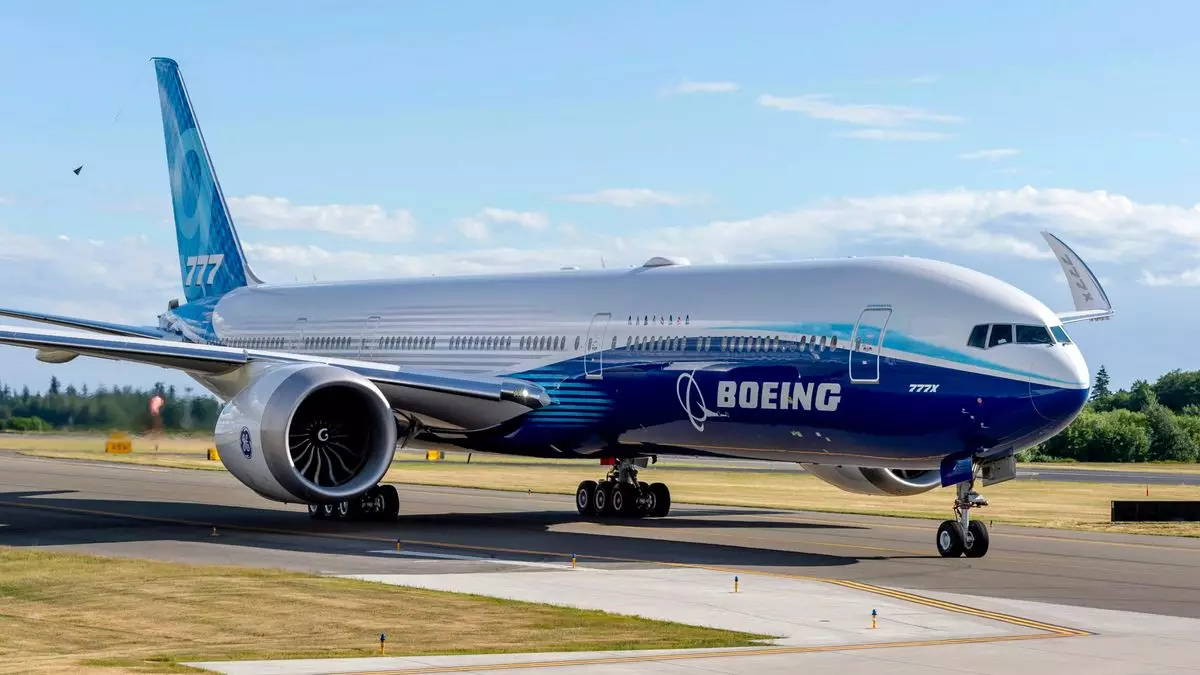Boeing is in a precarious position as it announces significant layoffs and ongoing financial struggles. The aerospace giant revealed plans to eliminate approximately 10% of its workforce, equating to about 17,000 jobs. This staffing reduction is part of an ongoing response to a myriad of challenges, including a crippling strike affecting production and a series of substantial financial losses. The situation paints a stark picture of an organization grappling with unprecedented adversity.
Newly appointed CEO, Kelly Ortberg, communicated this foreboding decision to employees in a memo dated October 11, which characterized the company’s current situation as “difficult.” Having taken the helm just months prior, Ortberg is the third executive to lead Boeing in less than five years, a reflection of the company’s turbulent history. His outsider status in relation to Boeing’s internal culture might hinder the effectiveness of his leadership in navigating the corporation through its challenges.
Ortberg’s announcement also indicated the suspension of rolling temporary furloughs that had previously been a strategy employed by the company. This shift suggests a sense of urgency in addressing the workforce issue as the company begins to grapple with fundamental structural changes necessary for its long-term viability. Such changes point to potential difficulties within the corporate governance model at Boeing, raising questions about stability and vision moving forward.
The financial metrics released along with the layoff announcement highlight extensive losses that have plagued the company recently. For the third quarter, Boeing reported a staggering cash burn of $1.3 billion and a substantial loss of $9.97 per share, far exceeding industry predictions. Analysts had expected a loss of $1.61 per share, but they were seemingly unprepared for the harsh realization of the company’s financial landscape, which included major write-downs that contributed to the negative results.
Strategic postponements of key developments are also indicative of Boeing’s crisis management strategy. The rollout of its new 777X aircraft has been delayed into 2026, and production of the cargo version of its 767 has been scheduled to cease in 2027. These delayed initiatives signal a need to recalibrate the production timelines, perhaps in an effort to manage short-term losses while trying to align with future profitability.
A pivotal factor in Boeing’s struggles is the ongoing strike involving approximately 33,000 union machinists, which began on September 14. This work stoppage has impacted the production line significantly, particularly affecting the 737 Max and other key aircraft. The company’s statement emphasized that it earns a considerable portion of its revenue upon delivery of aircraft, and the strike has directly obstructed this cash flow.
The ongoing labor strife has bred a more contentious environment, with Boeing recently filing charges regarding alleged unfair labor practices against the International Association of Machinists and Aerospace Workers. Such developments contribute to a complicated relationship between management and labor, further complicating efforts for cohesive recovery.
As Boeing seeks to stabilize, it is also mired in a web of regulatory scrutiny. Following safety concerns with the 737 Max, including the tragic crashes that resulted in 346 fatalities, the Federal Aviation Administration (FAA) has heightened oversight, adding yet another layer of challenge for the company. Furthermore, past criminal charges relating to fraud contribute to public wariness regarding Boeing’s practices, raising pressing issues about accountability and transparency.
The situation is undoubtedly complex, with each of these factors intertwining and impacting the company’s prospects. Ortberg’s leadership is tasked with not only addressing the immediate workforce and financial issues but also embarking on a long-term strategy that seeks to rebuild trust with stakeholders—including employees, customers, and regulatory bodies.
Boeing finds itself at a critical juncture, facing decisions that will reverberate throughout the industry. The combination of mass layoffs, financial losses, labor strikes, and regulatory scrutiny portrays a scenario that will require decisive and thoughtful actions. The road ahead appears rocky, but it is one that, if navigated skillfully, could offer a pathway to recovery for the aerospace titan. As it stands, Boeing’s future hinges on how effectively the company adapts to its tumultuous realities while striving to rejuvenate its legacy in the competitive air travel market.


Leave a Reply